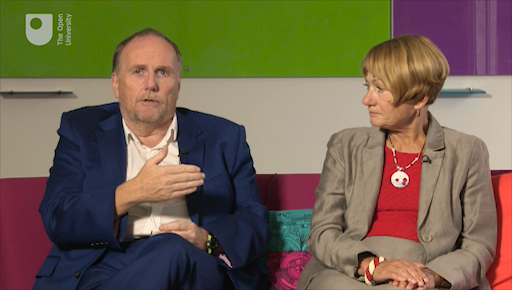3.1 Leadership media
The academic literature recognises the importance of leadership in creating and maintaining collaboration across organisational boundaries (Crosby and Bryson, 2010; Huxham and Vangen, 2000; Vangen and Huxham, 2003). As has been suggested in previous weeks of this course, this leadership is not confined to those with management positions or titles – it is enacted by participants at all levels, ‘champions’ who commit to the collaboration and engage others to do the same (Bryson et al., 2015). Influence can come from all sides in an inter-organisational collaboration. For example, in my (Carol’s) own research, I have observed small specialist voluntary organisations influencing powerful public agencies on the basis of their expertise and relationship with service users and communities (Jacklin-Jarvis, 2014).
However, in a collaboration, leadership, in the sense of setting the agenda, influencing the direction of the collaboration and achieving outcomes, is not entirely in the hands of participants (Huxham and Vangen, 2000). The structures and processes of collaboration also shape what it is possible (and impossible) to achieve. Furthermore, participants may have limited potential to influence structures and processes, because these are determined by outside factors, including government policy. The significance of structures and processes is particularly evident in formal collaboration arrangements, such as inter-organisational partnerships, with terms of reference, operating rules, and established processes for communicating. Huxham and Vangen (2000) describe participants, structures and processes as leadership ‘media’ that are all significant in ‘making things happen’, and determining the outcomes of collaboration.
Furthermore, leading across organisational boundaries adds a further layer of complexity to collaboration because each organisation has its own interests and purposes. Collaboration is possible because there is some overlap between those interests and purposes, but the distinctive identities of each organisation limit that overlap. Collaborative arrangements must both develop shared identity and respect and protect individual organisational identities (Jacklin-Jarvis, 2014).
Activity 3 Collaborative champions
Watch the video discussion with Liz Gifford of Milton Keynes Council and John Cove from MK Dons Sports and Education Trust (SET).

Transcript
Now answer the following questions in your learning journal: [Tip: hold Ctrl and click a link to open it in a new tab. (Hide tip)]
- what purposes do the council and MK Dons SET share?
- how might those purposes differ?
Liz and John highlight the importance of relationships between collaborating participants, but is there any indication here of the kind of processes and structures that might shape collaboration between a public agency and a local voluntary organisation?
Make sure you title the post with the week number and the number of this activity, Week 6 Activity 3.
Comment
Liz and John champion the potential of collaboration because they each believe that more can be achieved for local people by working together. They recognise the importance of identifying where their organisational purposes overlap (expressed by Liz as serving the public), and the potential for bringing together their different organisational resources. However, they also recognise the different objectives and interests of their organisations and the inevitability of conflict. They each highlight the importance of building strong relationships with individuals from different organisations and sectors for the inter-organisational relationship to survive beyond such conflict.
